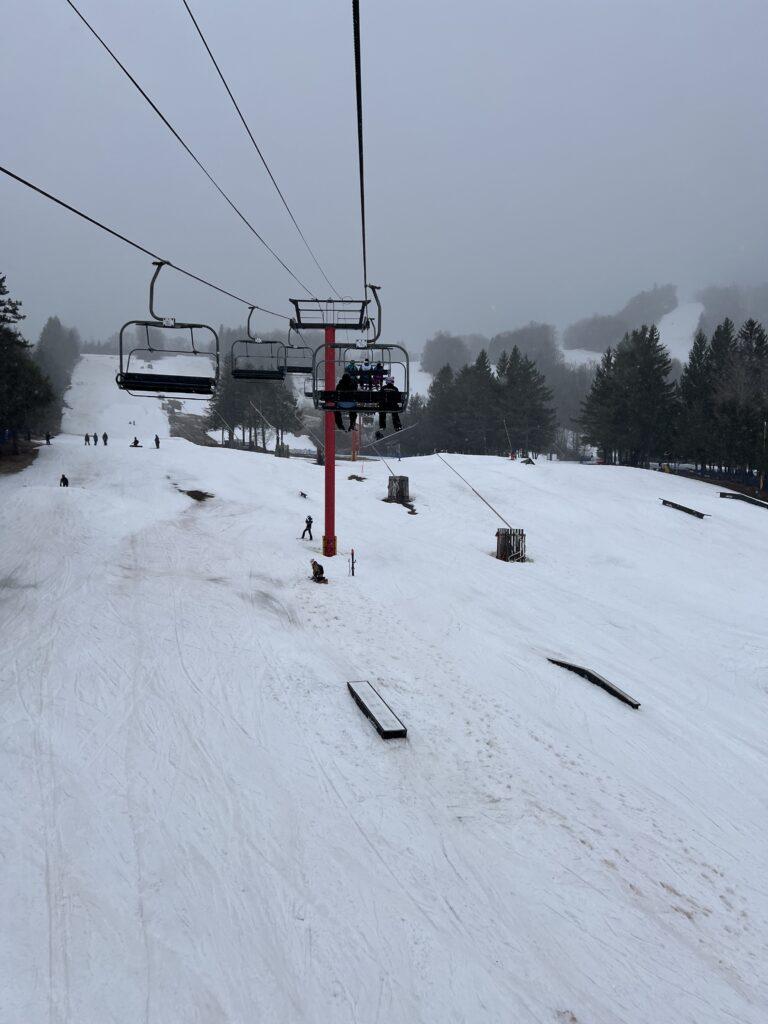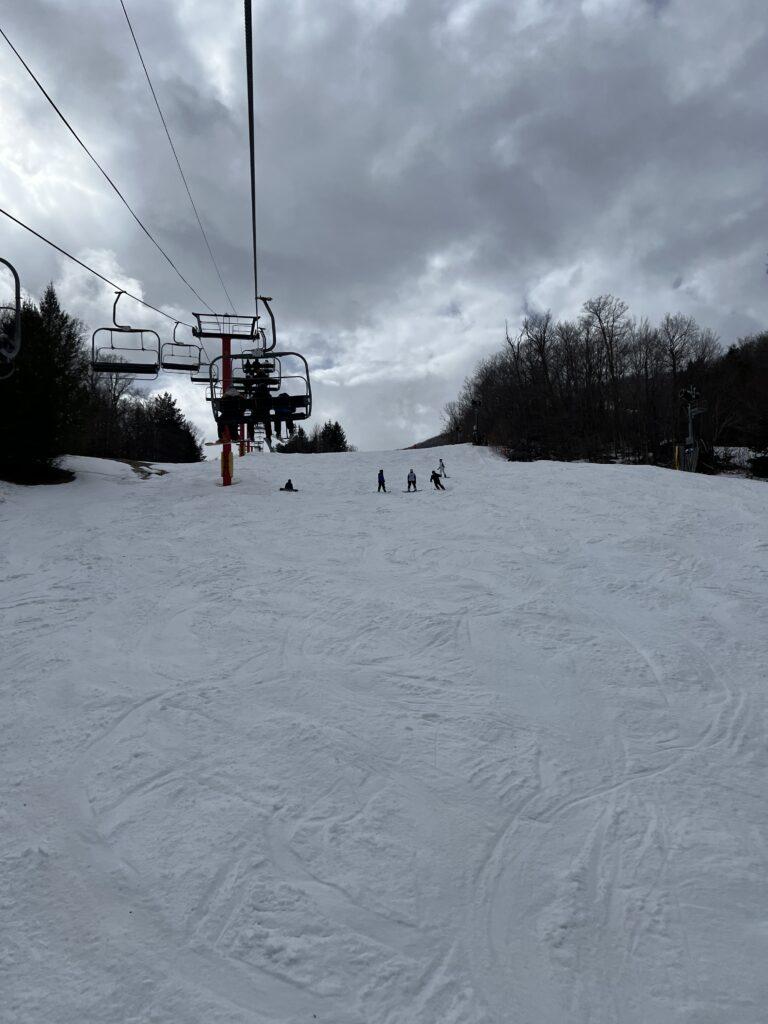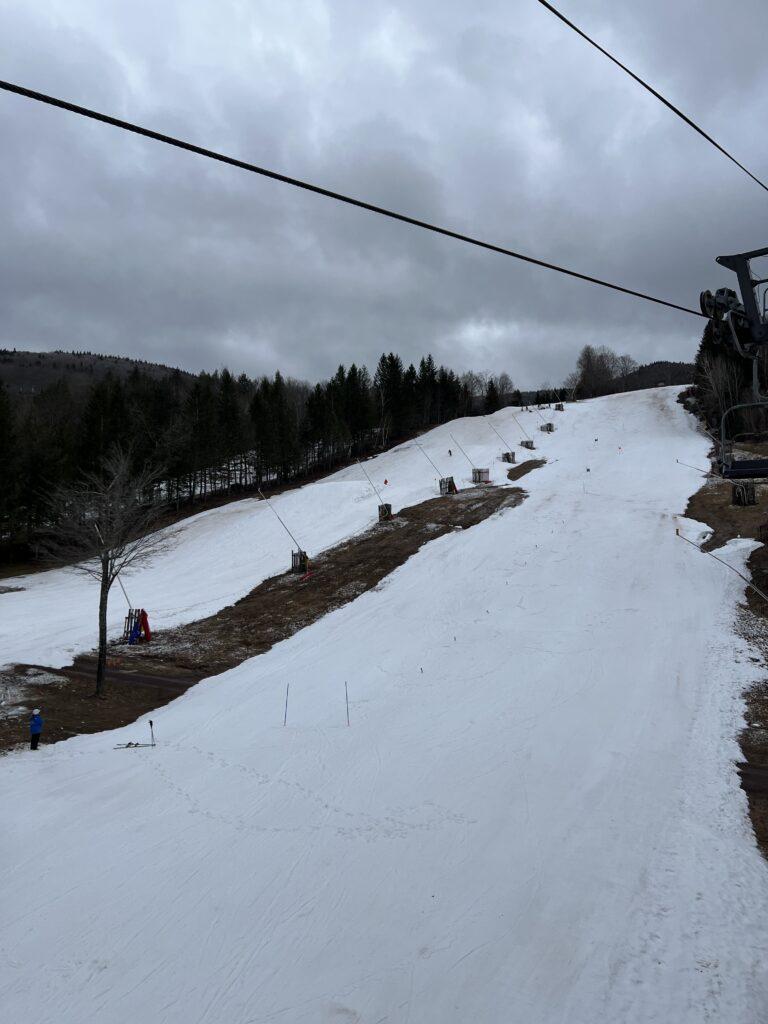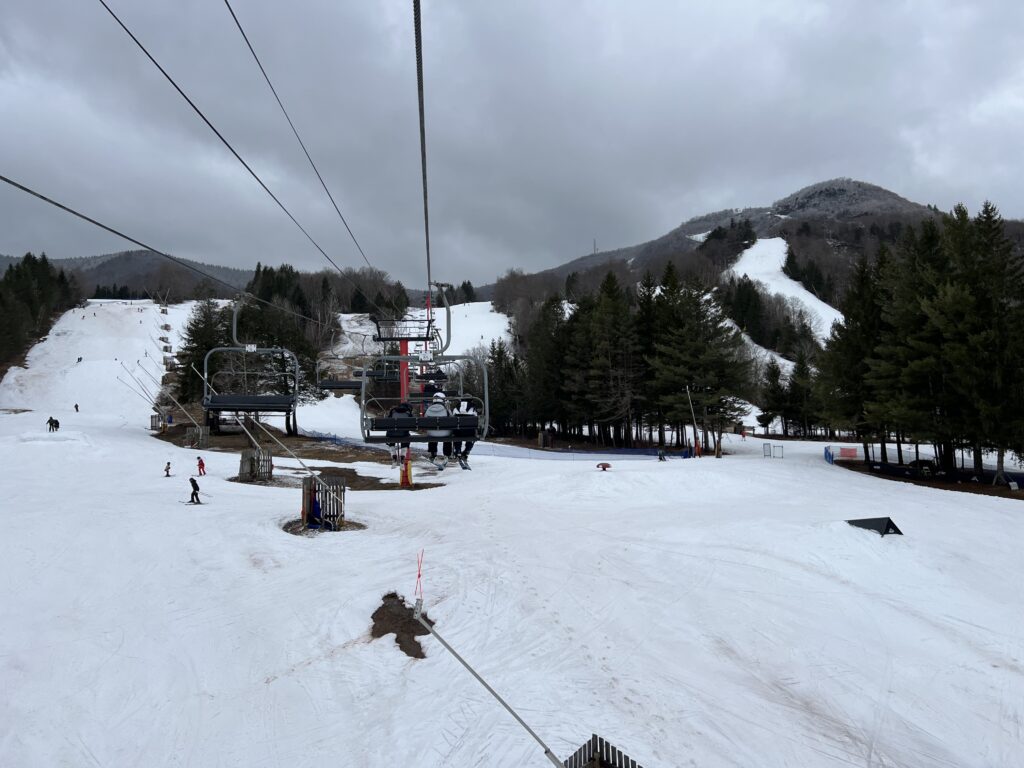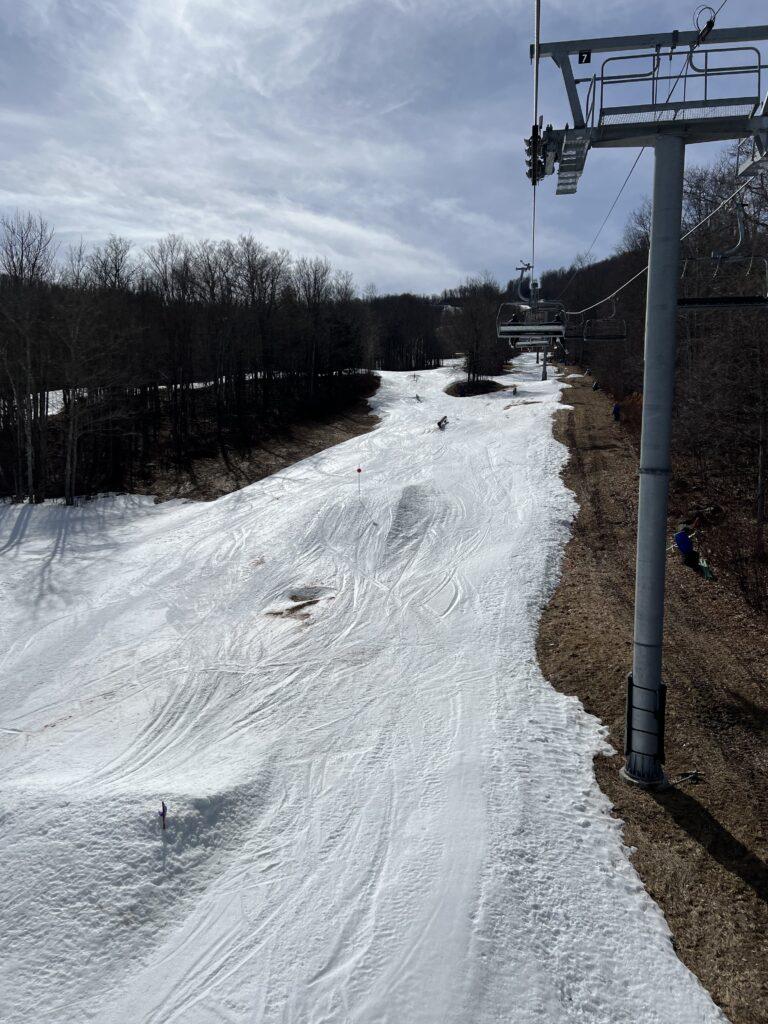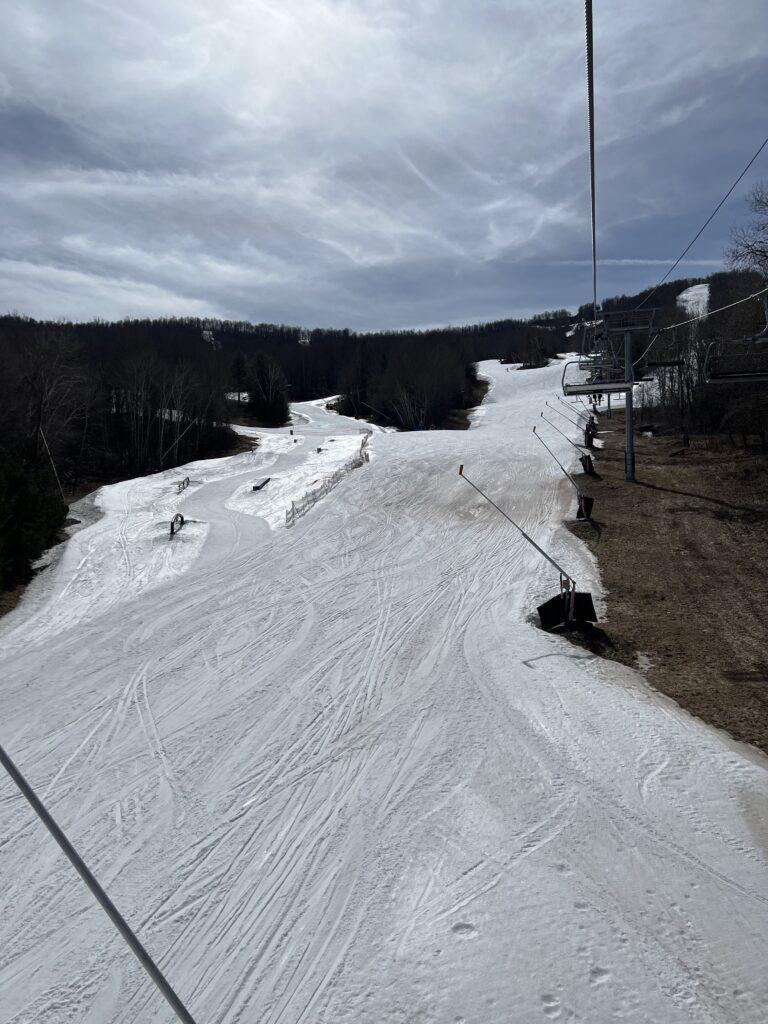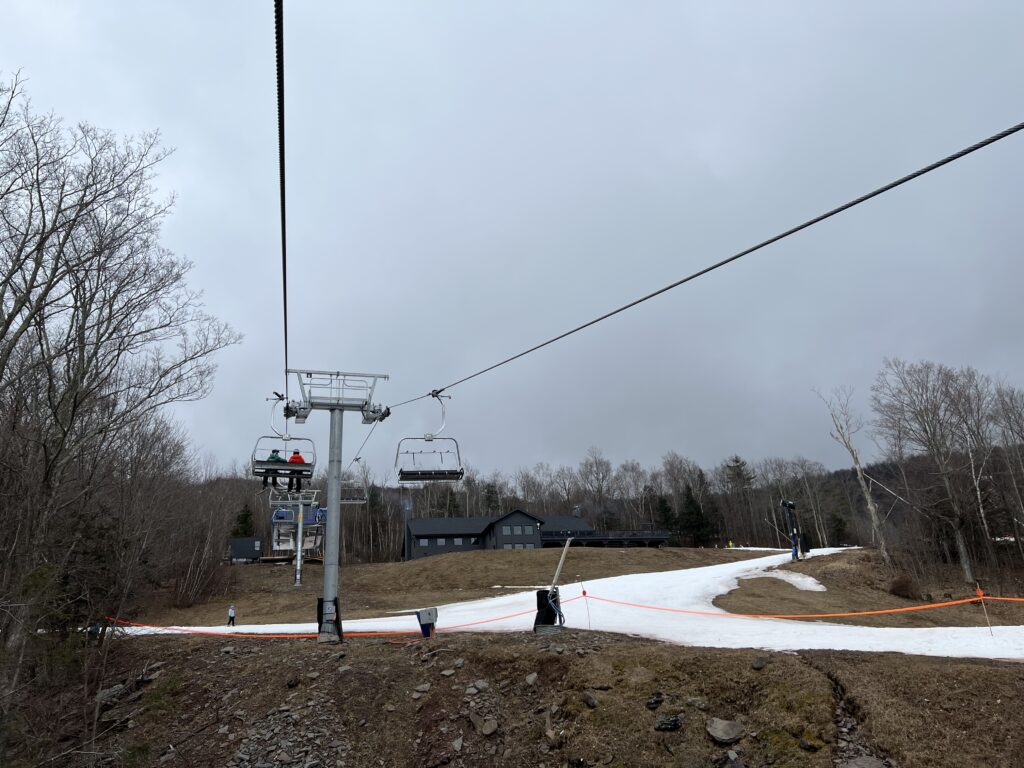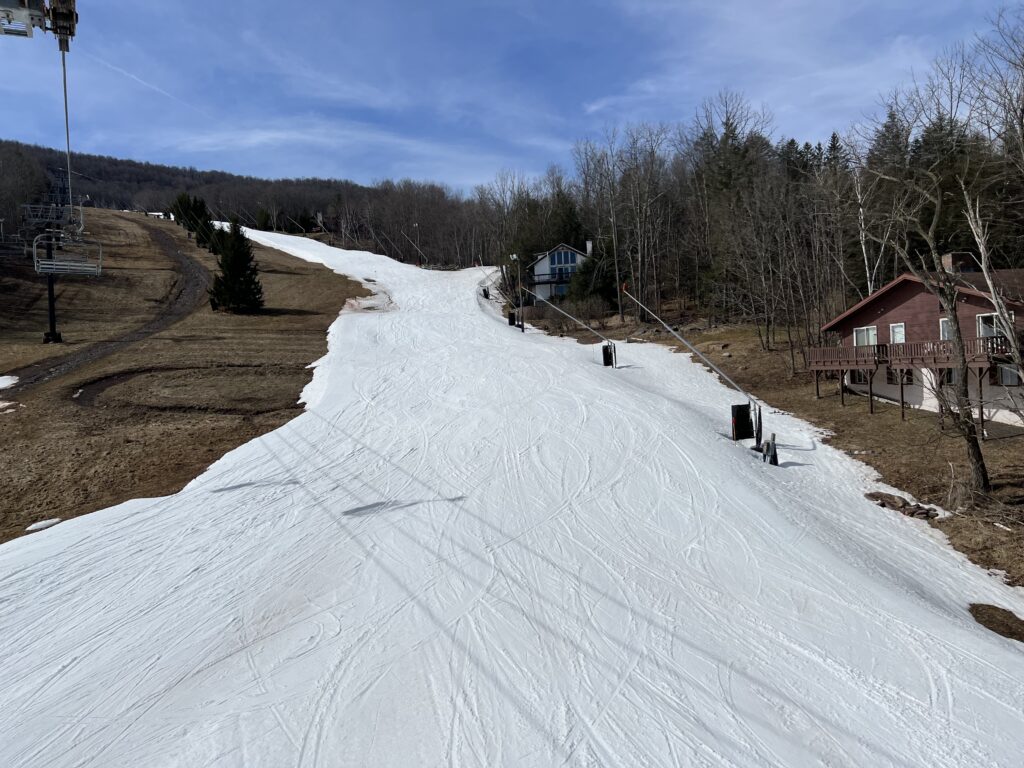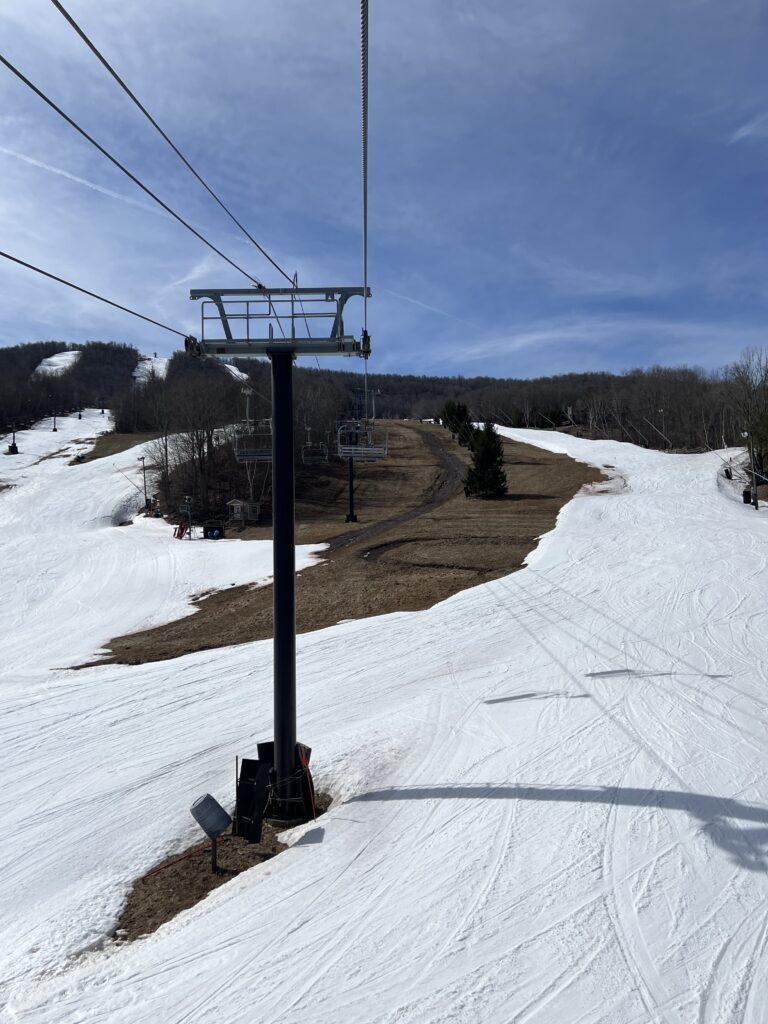by Albert Neubert
The brutal thaw at the end of February and through the first week of March was one for the record books. I asked many industry veterans, including ski area operators, if they ever experienced such an extended thaw as we just went through last week and every one of them emphatically said “No.” We went seven straight days without a freezing temperature even at the highest elevations and that included all of New England and the furthest reaches of Northern New York.
Ski conditions paid the price with numerous trail closures. It was very easy to tell which ski areas made the most snow in anticipation of surviving a sustained thaw. Those that didn’t are now closed or down to maybe one more weekend. Many ski areas south of Vermont have decided to suspend operations during the week to try to preserve whatever remaining snow they have on their terrain. Big Bear at Masthope, Pennsylvania, closed on Saturday and Mount Peter, in Warwick and the Victor Constant Ski Slopes at West Point, both in New York, closed on Sunday.
Skiers and snowboarders do a lot of damage to snow surfaces and then grooming machines will tear up the bases if the snow is too soft. Also, weekday turnouts drop precipitously during a more average winter but with this mild and wet weather, casual skiers and snowboarders can’t find the motivation to get out and make turns, especially when temperatures are in the 50s and 60s.
The Catskills are the one exception south of New England where daily skiing and riding continues. I took advantage of that by visiting the Windham Mountain Club, in the Northern Catskills on both Friday and Saturday last week. Windham’s bases have held up remarkably well during the thaws and rains and they still featured more than two thirds of their slopes and trails. On Friday, I was greeted by bluebird skis and temps that started out below freezing and then soared into the 50s. Three of the area’s four high speed chairs were going, serving the main mountain complex of trails. The East Peak section of the mountain was closed to preserve snow for the weekend.
Coverage was astounding given it rained over two inches a couple days before and while there were some bare spots and sinkholes, most of the terrain still had deep and edge-to-edge coverage. I had a chance to speak briefly with Chip Seamans, The Windham Mountain Club’s President and GM, and he said that his crew made an enormous amount of snow during the optimal periods. His team is also adept at “snow farming” which means pushing and pulling snow around trails to shore up weak spots or cover bare areas.
I managed to get in a ton of vertical in two hours and my legs started to get rubbery from heavier snow that was softening up under the intense sun. With a very light attendance on Friday, I basically skied right onto empty lifts and then made non-stop top-to-bottom runs.
On Saturday, it was the total opposite with low hanging clouds that shrouded the top of Windham’s peaks. There was some rain on my way to Windham and a very fine mist falling when I arrived and with temps in the upper 30s, combined with a surprising large turnout, snow surfaces were heavy with deep granular covering the slopes. I was only able to take a half dozen run before the clouds lowered and the rain picked up, making visibility very challenging.
On Sunday, I skied at Hunter, seven miles south of Windham on a very wintry day. The previous night turned snowy with several inches of heavy wet snow falling in the Catskills before it turned into mixed precipitation and then over to all rain. Hunter’s coverage was terrific but you could see the effects of the overnight downpours with washouts on some of the runs. The upper mountain was enveloped in clouds and there were heavy snow squalls while I was there. Attendance was very good considering the rain but it also led to moguls being created all over the terrain as the new snow combined with the heavy snow surfaces to build bumps on any of the steeper portions of the trail network.
I stayed on the lower portion of the mountain where there was less of a mogul build-up and just concentrated on technique and skills for skiing in heavy and variable snow. The conditions called for a slow and deliberate style with a strong stance to absorb the loose piles of snow in between the exposed hard pack bases. Ten runs in those conditions turned out to be a good workout so I called it quits.
That same storm wound up dumping up to 30 inches of snow on resorts in northern Vermont, New Hampshire and Maine. Gore and Whiteface, in the Adirondacks, picked up almost two feet at the summits. Southern Vermont ski areas like Bromley, Mount Snow, Stratton, Okemo and Magic Mountain got up to anywhere from a foot to 20 inches. That said, the milder temps that rolled in this week were going to take their toll on those resorts and especially so since natural snow melts much faster than the denser manmade equivalent.
March is when ski resort operators start offering season passes for next winter. There are so many pass options to choose from and you should consider a number of factors before making the decision to plop down a nice chunk of money for the privilege of being able to go right to the lifts next season. First, there are large multi-area operators or cooperatives that offer passes that allow either unlimited or limited access to all the ski areas that they either own or are part of their network. Vail Resorts has its EPIC pass series for its own ski areas and there is the IKON pass cooperative that allows access to the resorts in their network.
The most important thing to consider is how many times you expect to go to a ski area in a particular season. You can do a simple calculation of a single or multi-day ticket price and see how many times you would have to go in order to break even. Ski area operators are motivated to get as much revenue as possible before the season starts and they are pricing single use tickets much higher than in the past to try to get people to go for the season pass option instead. It used to be that it would take roughly 20-25 visits to break even on a season pass but that number is now much closer to as few as five to ten visits.
You also have to think about proximity which leads right into the number of times you will visit a particular area. And, if it is only a single resort pass, will you feel obligated to go as many times as possible in order to justify the pass expense? Many ski area operators also incentivize their passes with the ability to use them for the rest of this season (if you’re not already a season pass holder) but in a season like the one we’re experiencing, it might not make sense since there could be early closures. Another consideration is whether to buy now or wait until it gets closer to next season. Ski areas tend to offer substantial discounts now for next season and they ratchet up pricing as it gets closer to next winter.
One of my favorite passes is Vail Resort’s Epic Pass, because there are so many resorts where you can use it across North America. There are a total of 38 resorts for their unlimited pass which is priced at just under $1,000 but the Northeast Pass covers 21 ski areas and is priced at $600 with some restrictions during peak periods. That Northeast Pass covers places like Hunter, Okemo, Mount Snow, Stowe, Jack Frost and Big Boulder. You can go to their website at www.epicpass.com to peruse all of the alternatives and choose one that best suits your needs.
Think getting a pass, and happy skiing and riding! You can contact me at asneubert@aol.com or you can visit my Instagram page @asneubert.

